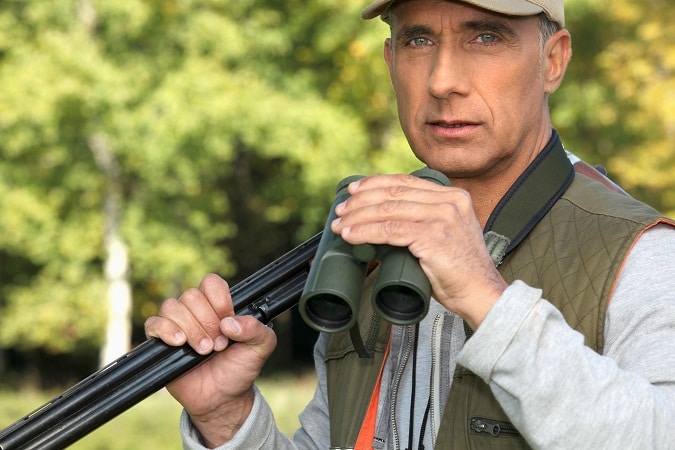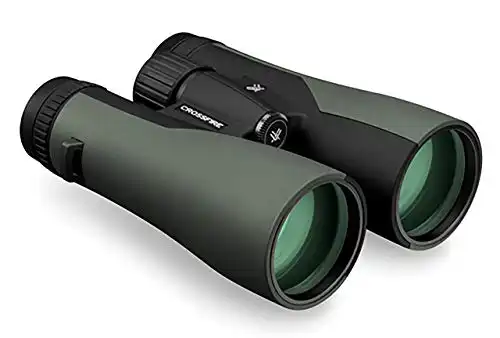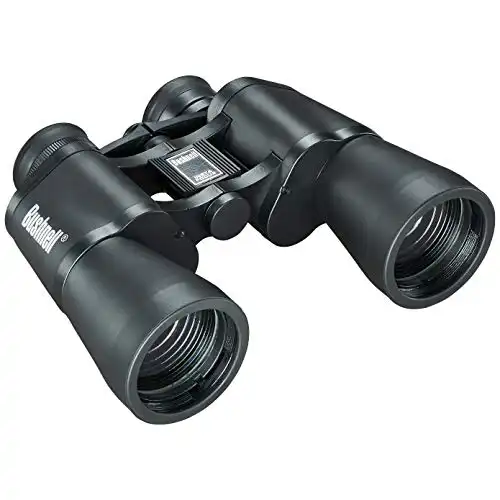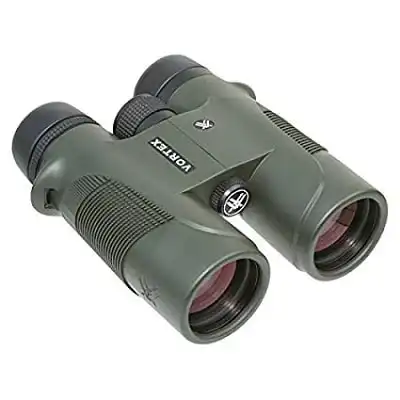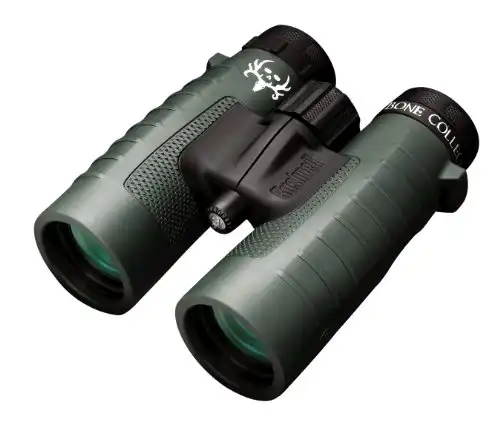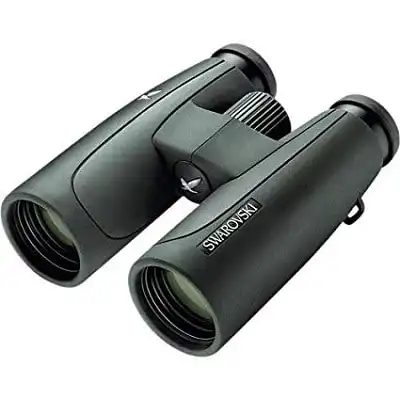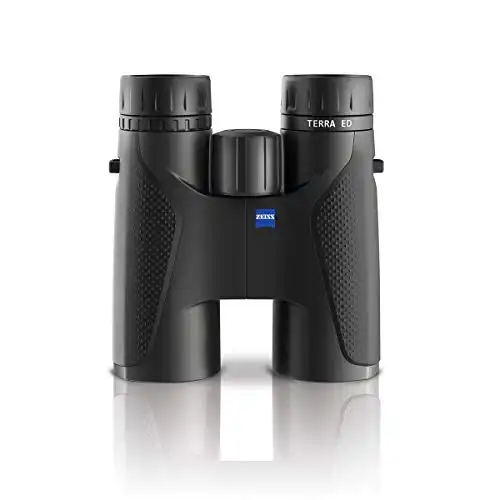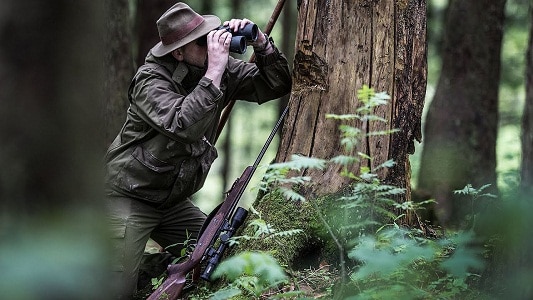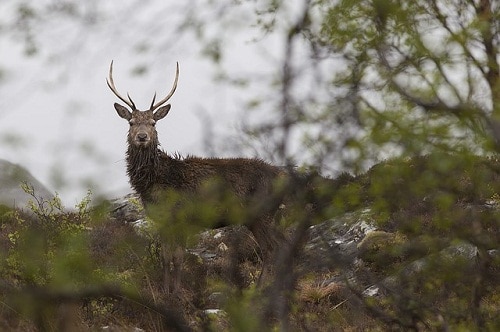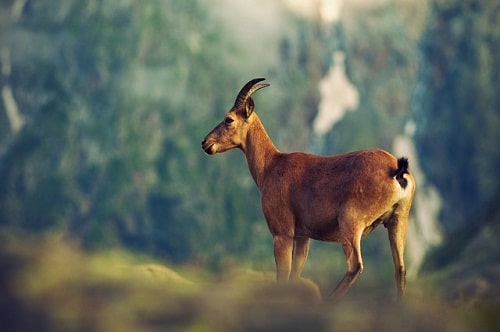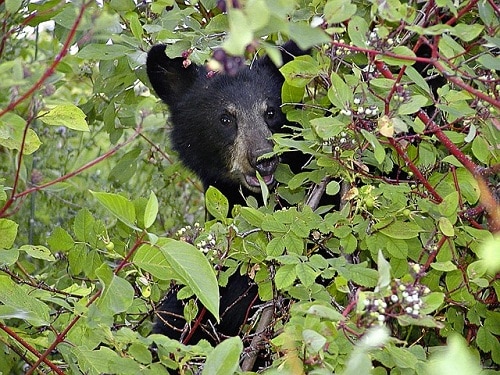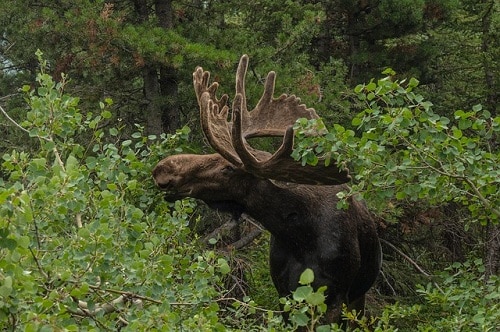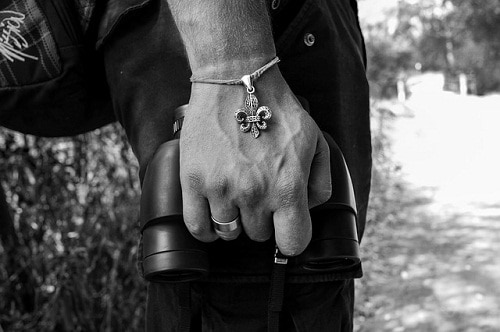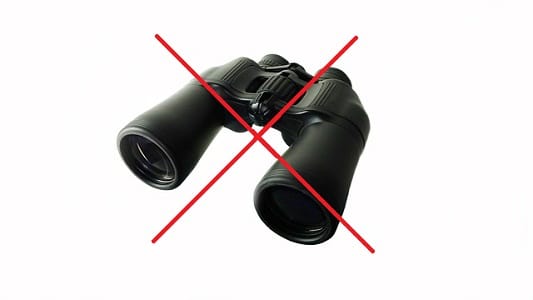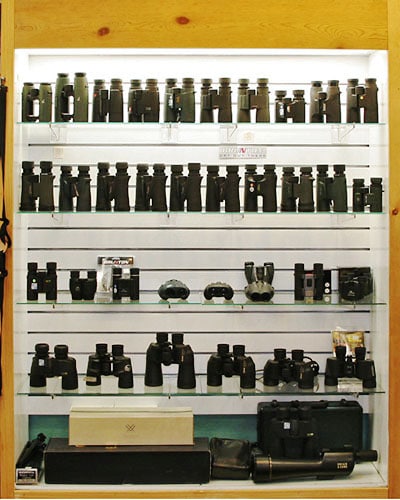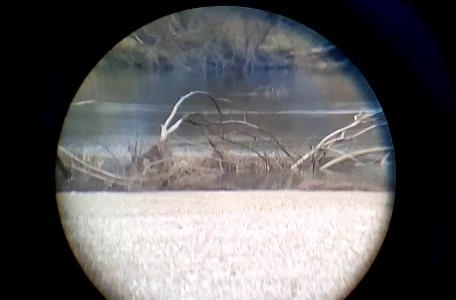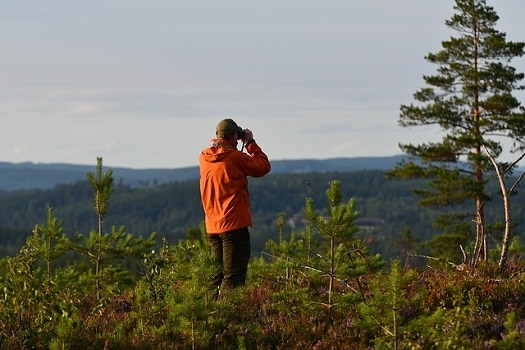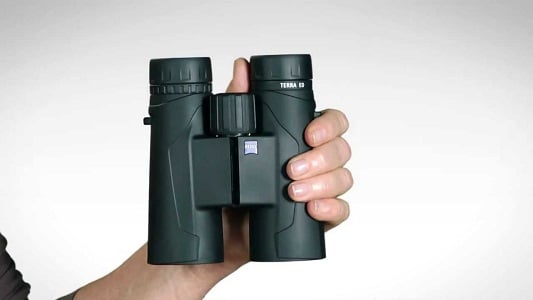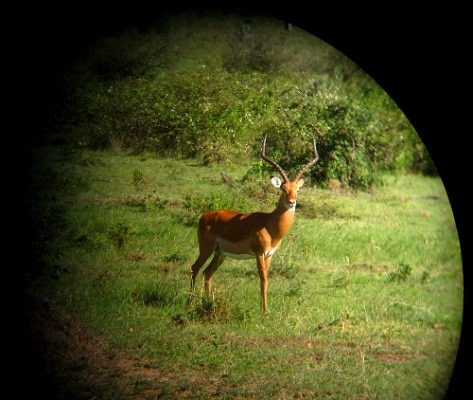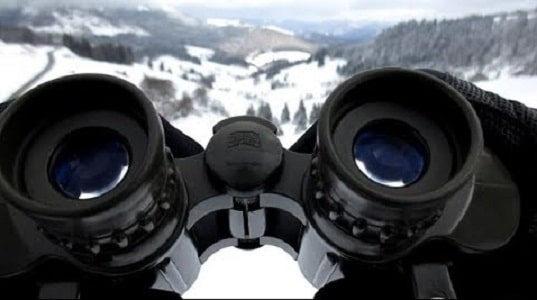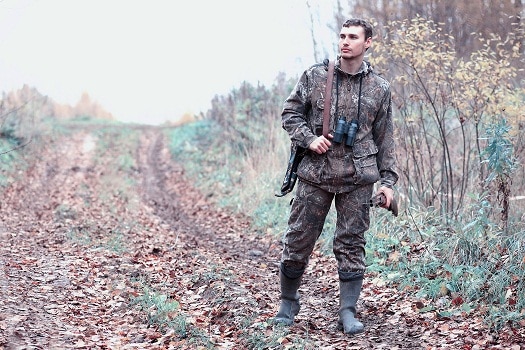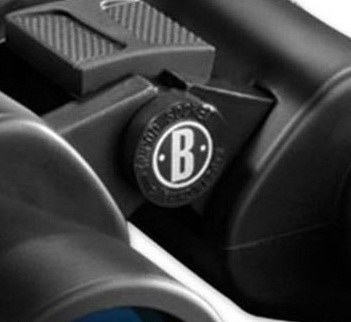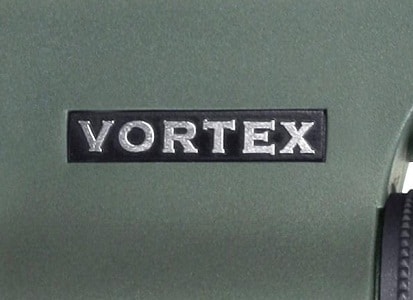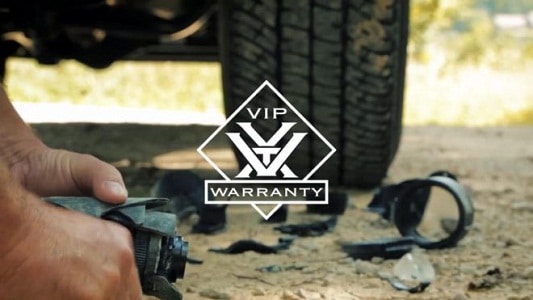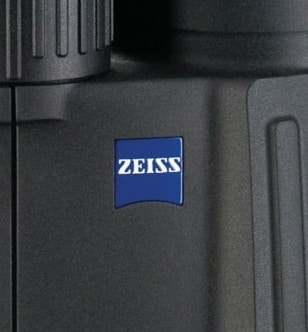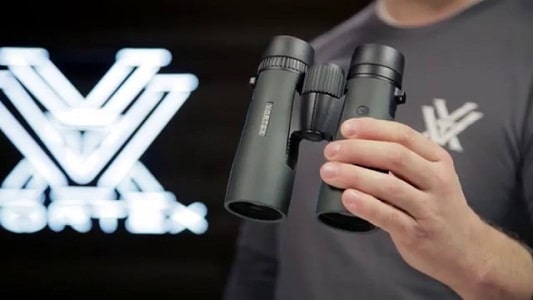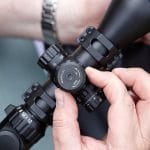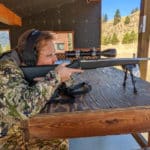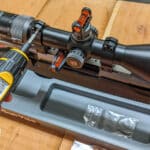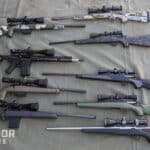If you’re hunting, you need binoculars.
It’s as simple as that.
In order to ethically take a shot, you need to identify the target animal species and gender as well as ensure that the backstop is safe enough to catch your bullet.
Also, binoculars are very worthwhile for longer-range hunting, where you need to find and track your animal. Is that brown dot across the valley and on the other mountainside a bear, elk, or hiker?
A good set of glass will let you find out, quickly and without frustration.
A cheap set of glass will show you a blurry image, if it survives the trek.
Make no doubt about it, you can’t buy a pair of binoculars for $20 and expect them to survive in the field.
But quality hunting binoculars don’t have to be terribly expensive, either.
The 6 Best Hunting Binoculars Reviewed in 2019
- Best cheap: Vortex Optics Crossfire
- Best cheap #2: Bushnell Falcon
- Best for the money: Vortex Optics Diamondback
- Best for the money #2: Bushnell Trophy
- Best overall: Swarovski SLC
- Best overall #2: Zeiss Terra ED
| Category | Best Cheap | Best for the Money | Best Overall |
|---|---|---|---|
| Product | 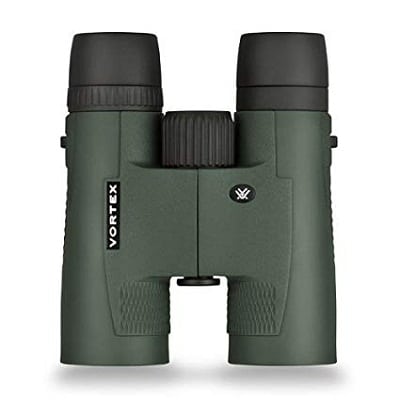 | 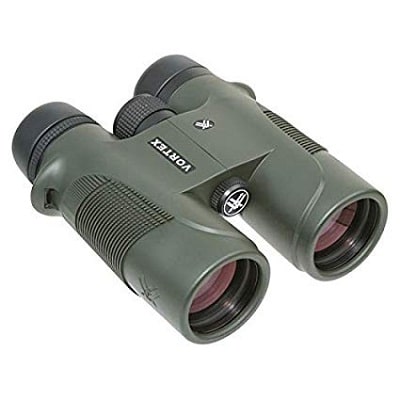 |  |
| Magnification | 8x | 10x | 10x |
| Objective Lens Diameter | 42 mm | 42 mm | 42 mm |
| Field of View at 1000 Yards | 393 ft | 330 ft | 330 ft |
| Close Focus Range | 7.5 ft | 6.7 ft | 10.5 ft |
| Eye Relief | 17 mm | 15 mm | 16 mm |
| Weight | 22 oz | 24 oz | 27 oz |
| Cost | Check Price | Check Price | Check Price |
1. Best Cheap Hunting Binoculars
- https://www.opticsplanet.com/vortex-crossfire-hd-8x42-binoculars.html?sscid=71k7_9k067&utm_source=shareasale&utm_medium=affiliate&utm_campaign=affiliate-2396132
- A few users reported fogging, but that should be covered by Vortex's warranty
Specs
Magnification: 8x
Objective Lens Diameter: 42 mm
Prism: Roof
Field of View at 1000 Yards: 393 ft.
Angular Field of View: 7.5 degrees
Close Focus Range: 7.5 ft.
Eye Relief: 17 mm
Lens Coating: Fully multi-coated
Weight: 22 oz.
Misc: Center focus wheel, rubber armor, twist-up eyecups, and nitrogen-purged
Overview
The Crossfire is Vortex Optics’ entry level glass, but don’t let that fool you. Whether scope or binocular, any Vortex Optics Crossfire item is going to be more than acceptable for all but the most discerning users.
These binoculars have a roof prism design for durability and compactness. The 8x magnification is a good level for scanning for deer or birds, and the 42 mm objective lens gives a field of view of 393 feet at 1,000 yards, which makes finding your animal even easier.
The body has a sleek yet grippy rubber coating. A large focus knob in the middle lets you switch ranges quickly. There’s one diopter adjustment, on the right eye. The eyecups twist in and out for use with or without glasses.
The optics have been nitrogen purged against fogging and sealed for waterproofness.
Recommendation
If you’re on a budget but still want good glass for your next hunting trip, Vortex Optics Crossfire binoculars are an excellent choice.
2. Second-Best Cheap Hunting Binoculars
- Good clarity for the price
- Fast and easy to use InstaFocus lever
- Inexpensive
- Large and heavy
- Not multi-coated, so the clarity could be better
- Sloppy focus
- Poor-quality accessories
Specs
Magnification: 10x
Objective Lens Diameter: 50 mm
Prism: Porro
Field of View at 1000 Yards: 300 feet
Close Focus Range: 25 feet
Eye Relief: 9 mm
Lens Coating: Fully coated
Weight: 27 oz.
Misc: InstaFocus lever, fold-down eyecups
Overview
The Bushnell Falcon 10×50 binoculars have an older design with Porro-style prisms, but they are still acceptable for hunting use if you don’t mind your gear a little rough around the edges.
Sub-$50 binoculars tend to lack clarity, but not these. The image is clear enough to find a deer or elk without too much trouble.
The build quality is pretty good, and these binoculars can handle a trek through the woods without difficulty.
The InstaFocus lever, while fast, relies on plastic components. This introduces an amount of slop into the focus, which can occasionally make it difficult to properly focus.
Also, all of the optics are coated, but they aren’t multi-coated, making these binoculars lack light transmission during dark conditions.
Finally, the included accessories, such as the neck strap, are not good. You’ll want to replace them almost immediately.
Recommendation
If you don’t have a lot of money to spend but still need hunting binoculars, then you can save a handful of dollars with the Bushnell Falcon 10×50.
3. Best Hunting Binoculars for the Money
Specs
Magnification: 10x
Objective Lens Diameter: 42 mm
Prism: Roof
Field of View at 1000 Yards: 330 feet
Angular Field of View: 6.3 degrees
Close Focus Range: 6.7 feet
Eye Relief: 15 mm
Lens Coating: Dielectric and fully multi-coated
Weight: 24 oz.
Misc: Non-slip rubber armor, nitrogen purged and waterproof
Overview
The Vortex Optics Diamondback is similar to the Crossfire series—except better.
The most notable improvements are to the optics, especially the dielectric coating. Tant coating ensures the prism is more reflective than the average, or even above-average, prism.
The rubber armor is also a little bit better and covers more of the binoculars. The sides aren’t as smooth and have more grip, so there’s less chance of dropping these binoculars in wet conditions.
Also, nitrogen purging ensures that the lenses won’t fog and impede your hunt.
While the optics are improved over lesser binoculars, they still aren’t as impressive as possible. It’s more than good enough for finding game but not as good for observing exotic bird plumage.
Recommendation
If you want your dollars to go far, then anything more expensive than the Vortex Optics Diamondback 10×42 will make you pay more for less benefit.
4. Second-Best Hunting Binoculars for the Money
- Comes with quality accessories
- Good lifetime warranty
- Occasional fogging issues
- Not the best optical quality
Specs
Magnification: 10x
Objective Lens Diameter: 42 mm
Prism: Roof BaK-4
Field of View at 1000 Yards: 330 ft.
Close Focus Range: 10 ft.
Eye Relief: 15 mm
Lens Coating: Fully multi-coated
Weight: 25 oz.
Misc: Nitrogen-purged and available in green or camo
Overview
Bushnell is a good company when you want to buy optics that are worthwhile but won’t break the bank.
The Trophy line replaced the previous Buckhorn line of products and are an improvement over their previous binoculars.
The Trophy 10×42 has BaK-4 roof prisms, which are compact and durable. The 42 mm objective lenses are not the lightest but give a good field of view, even at 10x magnification.
Also adding to the weight is the body, which is thick and strong enough to survive bouncing around your truck during hunting season.
The prisms and lenses are fully multi-coated, so they have good light transmission and can pick up identifying details even at dawn and dusk. However, you start to lose detail past about 250 yards, so these aren’t the best choice for long-range hunting.
You can buy the Trophy in green or camo. Oddly enough, the camo version is substantially more expensive than the plain green body.
Recommendation
Bushnell Trophy 10×42 binoculars are a good choice for hunting up to several hundred yards, though they lose clarity when glassing for farther targets.
5. Overall Best Hunting Binoculars
- Extremely clear view and vibrant colors
- Very durable chassis and prisms
- Expensive
- Heavy
Specs
Magnification: 10x
Objective Lens Diameter: 42 mm
Prism: Roof
Field of View at 1000 Yards: 330 ft.
Angular Field of View: 6.3 degrees
Close Focus Range: 10.5 ft.
Eye Relief: 16 mm
Lens Coating: Swarobright and Swarovision technologies
Weight: 27 oz.
Misc: HD Optical System and rotating strap attachment system
Overview
Ask anybody who uses optics, from photographers to bird watchers, and you’ll learn that Swarovski is at the top of the field.
The best hunting binoculars you can buy are the SLC 10×42 binoculars made by Swarovski. You’ll pay a pretty penny for them, but it’s worth it if you hunt frequently or appreciate the best gear.
The HD optical system provides a massive amount of contrast. Swarovision keeps the image straight and free of aberrations or color fringing, even at the edges. And Swarobright means that these binoculars have great light transmission at all times of the day.
Swarovski uses a magnesium chassis to save weight, but because the body is so thick and durable, the SLC is still a hefty product.
Even the strap connectors are better than the others. They easily rotate so your straps never hang up on the binoculars.
Recommendation
If you’re a fan of “buy once, cry once,” then you’ll get all of your crying over with when you buy the Swarovski SLC 10×42, a near-perfect hunting binocular.
6. Overall Second-Best Hunting Binoculars
- Hydrophobic coating
- Very compact for its magnification and field of view
- Very short close focus distance
- Small diopter adjustment
Specs
Magnification: 10x
Objective Lens Diameter: 42 mm
Prism: Roof
Field of View at 1000 Yards: 330 ft.
Angular Field of View:
Close Focus Range: 5.25
Eye Relief: 14 mm
Lens Coating: Hydrophobic fully multi-coating
Weight: 24.5 oz.
Misc: ED Glass and glass-reinforced polyamide body
Overview
The Zeiss Terra ED 10×42 binoculars are the second-most-expensive binoculars on this list and are also the second-best binoculars.
In fact, they may work better for many people than the Swarovski SLC!
The Terra ED is made with German glass and a Chinese body to maximally mix quality and value. The optics are fully multi-coated for image clarity, accurate colors, and light transmission.
Also, the external parts of the lenses have a hydrophobic coating to keep the glass clean from dirt, oil, and water.
The body is made from a glass-reinforced polyamide and covered with rubber armor, so this binocular can withstand abuse without damaging the optics.
The biggest area where these binoculars lack is the diopter adjustment, which is a mere plus or minus 3. This means that people with different vision qualities in their eyes may not be able to achieve a good focus level.
Recommendation
If you need the best hunting binocular you can afford without spending over a grand, then the Zeiss Terra ED 10×42 is perfect for you.
The Right Binoculars for Hunting Specific Game
It’s perfectly viable to choose a single pair of binoculars and use it for hunting any sort of animal. Every binocular above will serve you well in the field.
However, certain types of binoculars are better for hunting different game. You would use a different rifle for deer than you would moose, and the same is true for binoculars.
I’ll cover several different animals below and recommend specific binoculars for each one.
Oh, and by the way, if you do want to buy one set of glass and use it for everything, the Swarovski SLC 10×42 is the overall best choice.
Deer Hunting
There are two basic areas in which you’ll hunt deer: forests and fields.
Your choice of binoculars will change depending on whether you’re shooting at long range across fields or are stalking through dense woods.
For forest hunting, you’ll want an 8x set of binoculars. Woody terrain can be difficult too, so you want something robust.
My recommendation would, therefore, be the Vortex Optics Crossfire 8×42.
However, field hunting happens over longer ranges with more flat ground. The Bushnell Trophy 10×42 is a good choice for field work.
Elk and Mountain Goat Hunting
Mountainous and long-range hunting dominates elk hunting. Not only do you need to see far, but you need to be able to save weight as well.
The Vortex Optics Diamondback makes for a great binocular for elk hunting because you get the higher magnification without as much weight as some of the other 10×42 binoculars.
Goats are also found in the mountains, so my recommendation is the same for them.
Black Bear Hunting
You’ll generally find black bears in the woods, where you want high contrast without too much magnification.
So, for hunting black bears, I’d also recommend the Vortex Optics Crossfire 8×42.
Brown Bear and Moose Hunting
Brown bears, however, are often hunted at a longer range than black bears, so you’ll want a 10x magnification. The can also live in areas subject to perilous weather, similar to moose.
Don’t skimp on optics when hunting these large, dangerous animals. The Zeiss Terra ED 10×42 is a great choice, especially with its hydrophobic coating.
The Importance of Choosing a Good Pair of Binoculars for Hunting
Good optics are expensive, whether they are scopes or binoculars.
It can be tempting to save your money and buy cheap no-name binoculars or even go into the field without any good glass.
After all, you have a rifle scope, right?
That’s a terrible idea!
Riflescopes are a poor choice for scoping out an area to find and identify game.
They have a small field of view compared to binoculars, making it harder to find what you’re looking for. They’re also much more awkward to use because they involve aiming your gun where you need to see, which also violates the rules of firearm safety!
As for cheap binoculars, they’ll fail you in the field.
Hunting can involve large temperature swings. Foggy glass will block your view. Cheap prisms are dull and lack contrast, so you won’t be able to tell if that’s an antler or just a branch.
Binoculars which are hard to adjust or focus are frustrating to use and can strain your eyes, ruining the whole hunting experience and causing you to miss spotting your prey.
Cheap binoculars also have cheaper construction that can fall apart when knocked around, which often happens while tramping around the woods. And if water gets into the binoculars, forget it! Then you’re carrying around dead weight.
Good binoculars let you quickly find your animal and identify their species and gender without eye strain or frustration.
How to Choose?
So, you’re convinced you need a good pair of hunting binoculars.
Great!
Now, how do you choose which set to buy?
Well, earlier I gave some recommendations of which binoculars to use when hunting certain animals.
But I’m a big proponent of understanding the hows and whys of the gear you’re using. So, I’ll cover several aspects of choosing binoculars.
Everyone’s situation is different, even when going after the same game.
Perhaps you’ll learn enough to make a more informed decision, even one that goes contrary to my earlier advice!
Magnification
One of the most important choices to make is the amount of magnification you want.
Generally speaking, you’ll want 8x or 10x for hunting. Less magnification doesn’t let you see far-off details as well, and more magnification results in a shakier image.
Your choice of magnification will depend on how far you’ll need to use the binoculars. More magnification isn’t always better because you’ll lose out on field of view.
If most of your hunting is at closer ranges, within 250 yards, then a 10x magnification will be too much. You’ll lose too much field of view to be useful for finding game, and it may be hard to hold the view steady.
On the other hand, if you need to identify game at long ranges, you’ll want the higher magnification. You may not be able to identify your target with 8x if you need to glass game at over 300 yards.
Objective Lens Size and Field of View
Field of view is often measured in feet at 1,000 yards. So, if the measurement is 330 feet, then you’ll be able to see that many feet from one edge of your view through the binocular to the other edge.
A wider field of view is almost always better because it lets you see more of the landscape at once.
Hunting requires you to search for and find an animal, so you want as wide a field of view as possible.
Unfortunately, this often means you need a larger objective lens, which is the glass on the far side of the binocular.
Glass is heavy, so the larger the objective lens gets, the more the binoculars will weigh you down.
The most common objective size for hunting is 42 mm. It’s a good balance between a wide field of view and heavy weight dragging you down.
Sometimes you may want to go larger or smaller, but for hunting, you generally don’t want to stray too far from 42 mm.
Size and Weight
One of the biggest challenges hunters face is keeping all of their gear on them without becoming overburdened.
Ounces are pounds when in the woods, so you do want to choose your binoculars with an eye for saving weight.
Most binoculars are made from aluminum, which is pretty lightweight already. However, you can also find binoculars with a magnesium chassis. Those are almost as strong and save weight, or they can be used to bulk up the body for more durability without adding a bunch of weight.
Generally, you don’t want to save weight by choosing plastic binoculars. Those won’t adequately protect the inner optics most of the time. However, glass-reinforced polyamide is a good polymer that protects the lenses and prisms while saving weight.
Size is also a consideration, though not as much.
Hunting binoculars will often hang from your neck or on a chest rig, so you don’t need binoculars that are small enough to fit in a pocket.
Image Quality
Image quality is very important when hunting, but not in the same way as with other binocular uses.
Bird watching binoculars are optimized for color accuracy so you can enjoy the beautiful plumage of wild birds.
Hunting binoculars, however, focus less on color (most game animals are a shade of brown, after all) and more on contrast. This lets you spot a potentially camouflaged animal more easily.
Also, light transmission can be extremely important for hunting binoculars. Some animals are more active at dawn or dusk, times when there won’t be enough light for cheaper binoculars to transmit a clear image.
Fog, Waterproofness, and Durability
Nature is not easy on your gear, and hunters put more stress on their equipment than hikers or bird watchers.
This is because you won’t stick to the trails. You’ll go off the beaten path, through dense patches of vegetation and over weathered rocks.
This can scratch and bang up your binoculars, so you need to ensure they’re up to the challenge.
Weather is also an important consideration. Your binoculars will potentially be subject to freezing cold, harsh rain, and blazing sun. You need them to be able to handle all of these.
Also, a rapid change in temperature can cause cheap optics to fog up and make it hard to see your target.
This can even happen from raising cold binoculars up to your warm face!
Nitrogen purged binoculars don’t fog nearly as easily as cheap binoculars. It’s even better if the lenses have a hydrophobic coating, which also keeps off blood, oil, and dirt.
Environment
Finally, the environment in which you’re hunting can throw all of this advice out the window.
For example, my favorite hunting area is in Southeast Alaska. If you haven’t had the fortune of visiting, that location is dominated by the Tongass National Forest.
It’s densely-forested, mountainous terrain that’s actually a rain forest. Most of my encounters with game animals have occurred at tens, not hundreds, of yards. Even 8x binoculars are generally too powerful.
So, when hunting in this part of Alaska, I use a compact pair of binoculars to both save on weight and to get a small and easy boost to magnification.
I’ve also hunted in Kansas. Eastern Kansas has fields and forests with light woods, so both of my deer hunting recommendations work very well.
But western Kansas is flat with extremely long sight lines. When hunting in that area, you don’t move much and need to see far, so 12x binoculars shine.
Keep in mind where you’ll be hunting and choose accordingly!
Top Hunting Binocular Brands
Bushnell
Bushnell is based out of Overland Park, Kansas, near some of my old hunting grounds.
I do like Bushnell for more reasons than that, though. They provide good optics at a good price.
The Bushnell Trophy TRS-25, for example, is just about the only good red dot sight under $100.
Bushnell was founded in 1948 by David P. Bushnell, who brought back binoculars from Japan. Even today, Japanese glass is well-regarded.
Though most of their line is aimed at hunters and target shooters, Bushnell also sells microscopes and telescopes. Their products are good for nature lovers, stargazers, fishermen, and bird watchers.
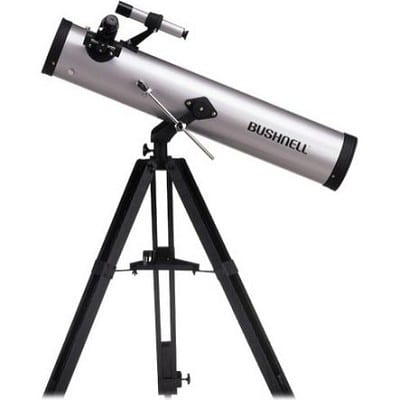
You can even find Bushnell binoculars at sporting events and theaters, so people in the nose bleed section can watch the actors on stage!
Few of Bushnell’s products could be called top-of-the-line. However, not everyone needs to spend the money on the best of the best. Bushnell’s binoculars and other optics provide a higher amount of value than similarly priced offerings from other companies.
Binoculars are a particularly strong focus of theirs. Bushnell has won awards for their designs, and they continue to design and produce high-value, high-quality binoculars.
Bushnell also owns Butler Creek, Simmons, Tasco, Uncle Mike’s, and my favorite gun cleaning company: Hoppe’s.
Vortex Optics
Vortex is one of my favorite optics manufacturers, both for binoculars and for rifle scopes.
They’ve made it their goal to provide high-quality glass at a reasonable price, across all budgets.
They sell riflescopes, red dot sights, spotting scopes, binoculars, rangefinders, and monoculars. Their target markets are hunters and guides, recreational and competitive shooters, as well as military and law enforcement personnel.
Vortex Optics is based out of Wisconsin, but they have representatives across the nation and even in Canada.
Perhaps my favorite quality of Vortex’s is their warranty. Every Vortex customer is a VIP, even if you have their cheapest product.
Most warranties only cover the manufacturer’s liability. Vortex claims their warranty is an “Unlimited, unconditional lifetime warranty.” This means that they will cover damage to the unit, even from a mishap while hunting!
You don’t need to fill out and send in a warranty card. You don’t need to hang onto your receipt. You don’t even need to be the original owner of the product.
If you have a Vortex Optics binocular that was damaged for any reason, short of deliberate damage, contact Vortex and they will make it right.
Their products are recommended by users in forums across the internet and by hunters who use them out in the woods.
Sure, sometimes someone has to send in a defective unit. But nobody has anything negative to say about their customer service.
Zeiss
Carl Zeiss AG, often just called Zeiss, was established by Carl Zeiss in Germany in 1846. He teamed up with Ernst Abbe and Otto Schott to form an optics manufacturing company that laid the groundwork for modern lens and prism technology.
Many modern prisms used in binoculars, riflescopes, telescopes, and other optical devices are based on glass developed by Zeiss. One of the most famous prisms is barium crown glass produced by Schott, also called BaK-4.
If Zeiss had any problem, it’s that their quality was too high for many amateurs to afford. Zeiss scopes and binoculars, for many years, were exclusively top of the line. This put them out of the budget of the average hunter.
Recently, however, Zeiss has started to take advantage of overseas manufacturing to produce binoculars that are nearly as good as their most expensive fare for a fraction of the price.
Zeiss has three lines of sports optics: Victory, Conquest, and Terra.
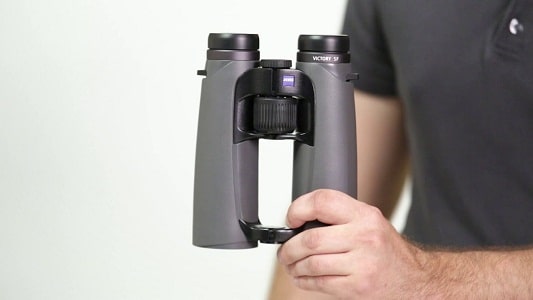
In all cases, the lenses, prisms, and other glass are still manufactured in Germany. But the body of the Terra line of Zeiss binoculars is often made in China. A single imperfection can ruin a lens, but the chassis does not need to be held to such a standard.
This lets you appreciate Zeiss quality without spending more on your binoculars than you did on your rifle and scope.
Conclusion
All of the binoculars above are good hunting binoculars. They’ll survive many trips into the woods and will help you find many game animals.
Some are better suited for deer, others for elk. And where you’re hunting affects your choice as well.
If I had to choose one pair of binoculars, however, I would pick the Vortex Optics Diamondback. It provides tremendous value for your dollar, has great optical clarity, and will survive any weather system.
Happy hunting, and may you always find your animal!
If you are not looking for hunting specific binoculars, take a look at our list of top 12 binoculars for all purposes.

